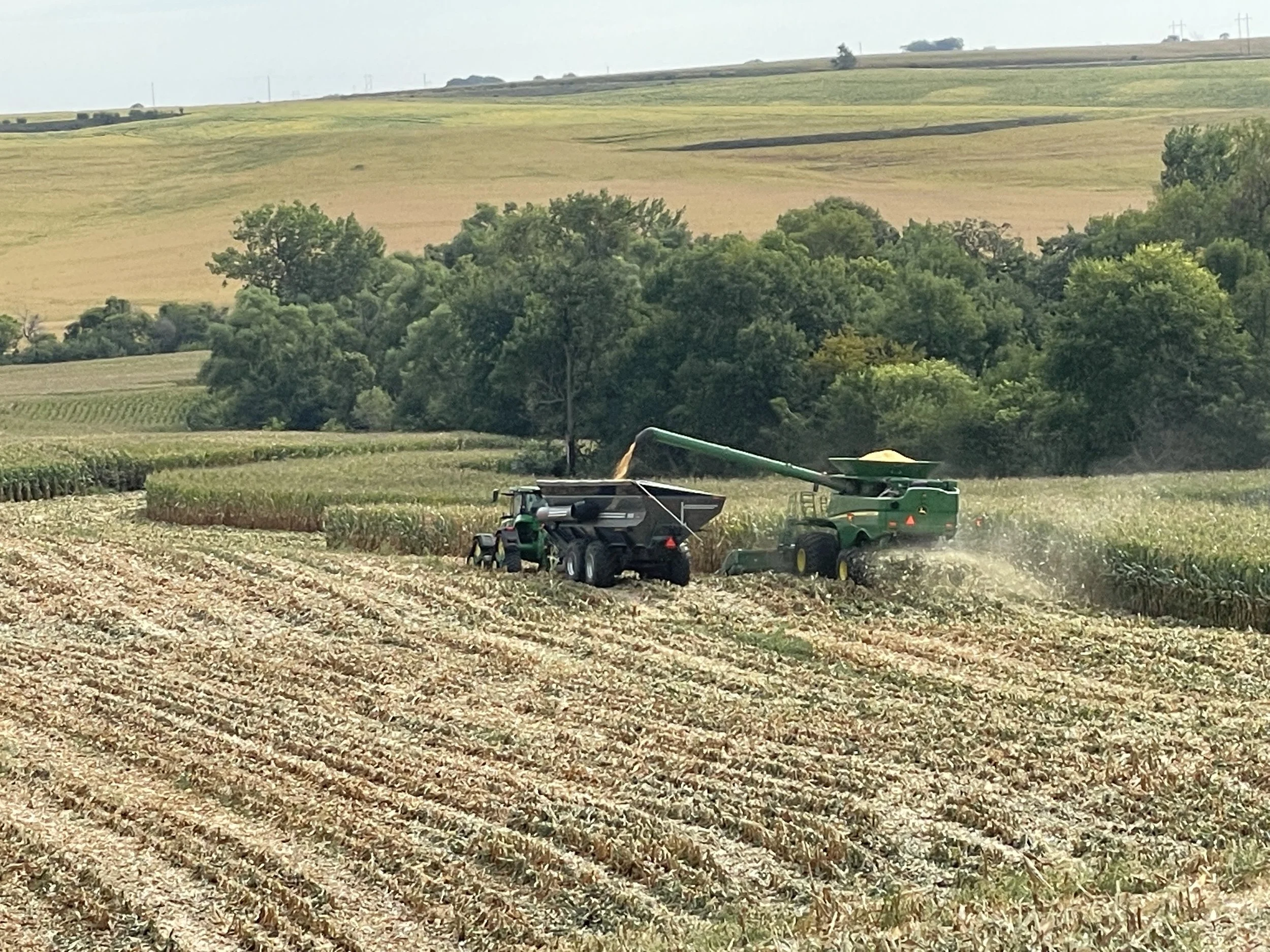Carbon as the Third Crop: Farmers and Financiers Sketch a Faster Path From Field to Scope 3
The JP Morgan roundtable at New York Climate Week featured panelists Kelly Garrett, Peter Mayer, and hosts Heather McGee & Jennifer Larkin.
At Climate Week in New York, an exclusive roundtable hosted at J.P. Morgan Private Bank spotlighted one of climate finance’s most pressing but often overlooked questions: how to make regenerative agriculture both investable and scalable. The discussion coincided with the launch of The Role of Regenerative Agriculture in Corporate Net-Zero Commitments, a new report from the 17 Intentional Investment Institute.
The conversation’s core message was simple: carbon should be treated as a farmer’s third crop—alongside corn and soybeans—turning carbon capture and storage into a vital revenue stream, not just an environmental good.
Carbon as another crop
Garett’s farm in Iowa
Kelly Garrett, a sixth-generation Iowa farmer and one of the first U.S. growers to sell soil carbon credits, framed the mindset shift underpinning his operation.
“Carbon should be treated like another crop,” he told the audience. “If the carbon price shows an ROI, farmers will farm it like their next crop. They don’t want handouts; they want a market that pays them when they deliver.”
Garrett explained the mechanics behind this transformation: emission factors and carbon intensity (CI) scores quantify the impacts of different farm practices. By shifting from conventional tillage to no-till, reducing synthetic nitrogen, and integrating cover crops, his farm’s CI score fell from the U.S. average of 29 to –3. Multi-season trials showed that just 60 pounds of nitrogen could match yields produced with 240 pounds—slashing costs while curbing emissions.
“These aren’t sacrifices,” Garrett stressed. “It’s smart agronomy. And when the numbers work, farmers adopt them.”
The investor’s lens
Peter Meyer, a commodities economist and co-founder of AgriSets, echoed Garrett’s optimism but also outlined real hurdles.
“Globally, agricultural credits are among the highest-quality offsets because they’re measurable,” Meyer said. “We’ve seen major European trading houses buying forward contracts for projects delivering credits in 2027. This market is where it’s headed.”
However, the domestic voluntary market faces political uncertainties and lengthy credit verification timelines. “Getting a project approved at Verra can take 18 months,” Meyer said. “Their methodologies are academic and impractical for real-world farms—that bottleneck keeps ag credits scarce.”
Economics remain challenging. Currently, only half of the value from a $50 credit reaches the farmer. AgriSets aims for a leaner model: “On a $100 credit, we want $80 to go directly to farmers. That’s how you shift the needle.”
Data as connective tissue
Both panelists emphasized data credibility as essential. Garrett’s operation pulls 36 data points per acre- ranging from seed density to nitrogen usage - from precision agriculture systems. AgriSets cross-verifies this with supplier records and invoices.
“We have farm moms on our team,” Meyer quipped. “They can sniff out BS and verify every detail.”
This aligns with the Institute’s report, which advocates standardized emission factors and CI scores as critical to bridging farmer practices and corporate Scope 3 accounting needs. With regulatory pressure mounting from the EU’s CSRD and California’s climate disclosure laws, the ability to source measurable outcomes at the field level could revolutionize corporate procurement. Most importantly, it underscores that companies can begin working with farmers now to offset emissions, rather than waiting years for costly technologies to mature.
Costs, cover crops, and constraints
Despite the promise, Garrett cautioned that some regenerative practices remain financially difficult to adopt. Cover crops cost $30–40 per acre to establish, a hard sell when many farmers already lose $300–400 per acre on corn.
“That’s why treating carbon as a crop is so powerful,” Garrett said. “If carbon pricing offers real ROI, farmers won’t need handouts—they’ll produce credits the same way they produce crops.”
Meyer added that systemic incentives matter: “Farmers borrow annually for crop loans. If carbon becomes a consistent revenue line, they’ll secure better credit terms. That’s real resilience.”
Adoption at scale
During Q&A, an online participant asked how to grow no-till or reduced tillage adoption past the current plateau of roughly 50% of U.S. farmland, based on rough estimates.
“Education is the biggest factor,” Meyer responded. “Farmers want demand for their output—not handouts. With stable carbon income, adoption accelerates naturally.”
Garrett agreed: “Stewardship is in the DNA of farmers. Everyone wants to leave the land better than they found it. They just need to pay their bills. If carbon markets respect that reality, the adoption curve will bend fast.”
A framework for action
The Institute’s report, authored by my team, echoes these themes, calling for:
Project aggregation at scale to reduce transaction costs
Standardized metrics and methodologies for market trust
Outcome-based contracts building links between corporates, investors, and farmers
Without such foundational steps, the report warns, corporate Scope 3 targets risk outpacing the supply of credible credits as agribusiness supply chains will be vulnerable to increasingly severe weather events. Scope 3 targets are more than just goals; they are guiding corporations to a more resilient way of doing business.
In conclusion, the roundtable left listeners with a paradox: regenerative agriculture’s science is ready, farmer incentives are clear, and corporate demand is growing—yet barriers in verification and revenue flow slow progress.
“Carbon isn’t charity,” Garrett concluded. “It’s just another crop. Treat it that way, and everyone wins—the farmer, the corporation, and the climate.”


